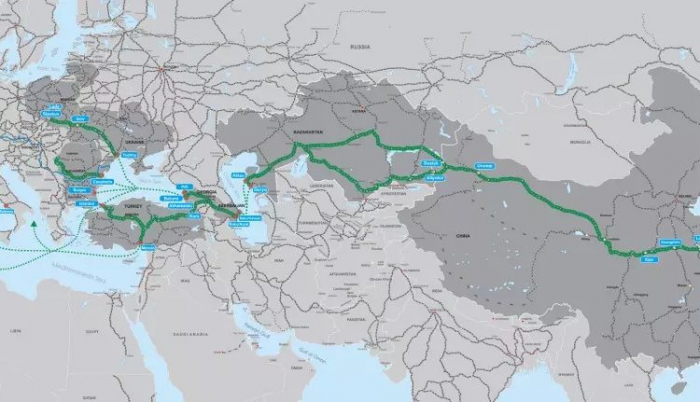The Belt and Road Initiative (BRI), China’s ambitious infrastructure and trade project, faces some hurdles in the Caspian Sea region. The Trans-Caspian International Transport Route (TITR), a BRI corridor, is prioritized to connect China with Europe through Central Asia and the Caspian Sea and presents a complex geopolitical landscape.
The Trans-Caspian International Transport Route (TITR) may seem like a promising solution for faster trade between China and Europe, but it is important to delve deeper into the political complexities surrounding it. The countries bordering the Caspian Sea, namely Azerbaijan, Iran, Kazakhstan, Russia, and Turkmenistan, have different political alignments and economic interests.
Russia, a key player in the region, views the TITR with some serious suspicion, wary of China’s growing influence in its backyard. Iran, under long-term, heavy sanctions, sees the TITR as a potential economic lifeline, while Kazakhstan and Turkmenistan navigate a delicate balance between China and Russia. In this case, Azerbaijan’s position is more balanced. Azerbaijan, for its part, seeks to leverage the TITR as a means to diversify its economy and lessen its dependence on Russia. However, official Baku also recognizes the importance of maintaining a balanced foreign policy and will likely avoid actions that antagonize Russia.
These geopolitical tensions could pose or already pose significant challenges for the TITR’s successful development, which means infrastructure investments require regional stability and cooperation. But despite the challenges, the potential economic benefits of the TITR are undeniable. Increased trade flows could stimulate growth across the region, and the development of necessary infrastructure could create jobs and improve connectivity among the involved countries and other interested countries.
The TITR’s success also depends on China’s ability to navigate these geopolitical currents. Encouraging a spirit of cooperation among the Caspian states, addressing security concerns, and ensuring transparency in project development will be crucial.
The TITR serves as an example of the broader challenges facing the BRI. China’s grand vision for global connectivity must contend with the complex realities of geopolitics. The Trans-Caspian Sea region will be a crucial test case, demonstrating whether the BRI can navigate these challenges and usher in a new era of cooperation or become entangled in a web of geopolitical rivalry.
However, the equation is not entirely China-centric. The Caspian states themselves have a role to play. By prioritizing regional integration and economic development over short-term political gains, they can create a more favorable environment for the TITR’s success. Additionally, fostering stronger ties with the European Union, another potential stakeholder in the project, could provide a much-needed counterweight to Russia’s influence in the region.
The ultimate outcome of the TITR will depend on the ability of all involved parties to prioritize long-term economic benefits over short-term political considerations. Success would signal a new era of cooperation in the region, while failure could further fragment the geopolitical landscape.
The TITR is not simply a standalone project but rather a key component of the BRI’s ambitions in Central Asia and Europe. Its success would not only benefit the Caspian states but also solidify China’s position as a major player in Eurasian trade.
Sadig Gachayev, PhD in Public Administration
Yanshan University, People’s Republic of China
More about:
















































